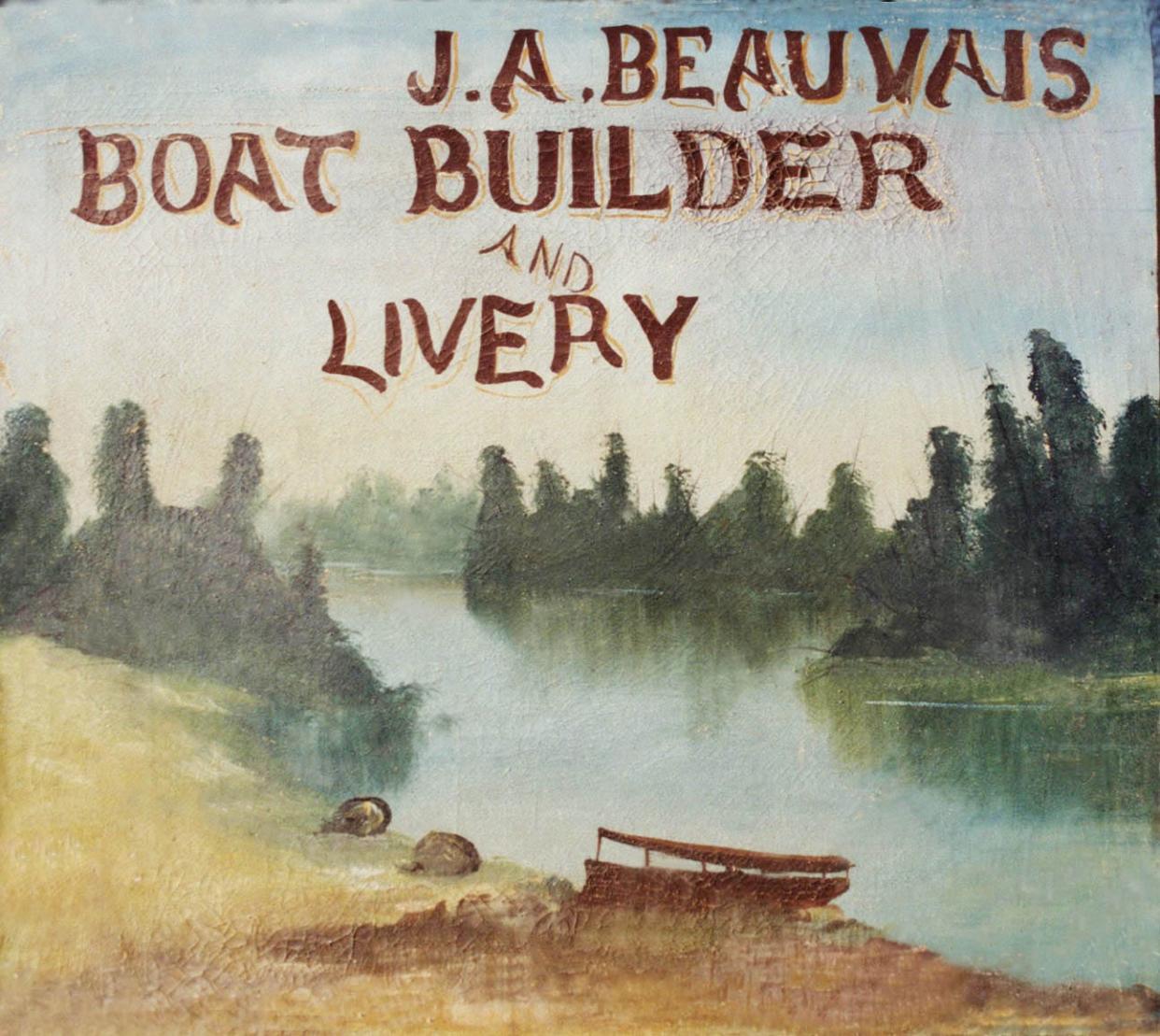Looking Back: Charlevoix's first commercial boat builders and a Chicago canal

CHARLEVOIX — One hundred and fifty years ago, the Nov. 29, 1873 Charlevoix Sentinel reported the “South Arm is frozen over.”
The western, narrower portion of Pine Lake (later named Lake Charlevoix) was already locked in for the winter by late November, and would probably stay that way until the following spring.
“SHIPYARD.—Dougherty & Carr, of this village, have purchased Lots. No. 5 & 6, of Newman’s Addition, fronting on Round Lake, and they will convert them into a ship yard.” Messrs. Dougherty and Carr were the first reported commercial boat builders in Charlevoix, joining forces in 1871 and working on commission for vessels destined to be delivered as far south as Elk Rapids and Leland. Before them, boat building had begun here originally on an individual basis. Many were the early pioneers who needed a boat to survive, especially those who put down roots away from town on the inner lakeshores. If they hadn’t already arrived here on their own vessel, and they didn’t know how to build one, they learned quickly.
Dougherty & Carr were the forebears of an industry that grew steadily to include some of the finest, most sought-after boat builders and repairers on the Great Lakes. In December of 1892, one of them, the Joseph Beauvais Boat & Canoe Company, was personally invited to display its exquisitely crafted vessels at the Chicago World’s Columbian Exposition of 1893, the famed “White City.”
“School starts off in good shape, with about 70 scholars. Some inconvenience is experienced in one department, owing to the absence of available seats, which have been sent for, but do not arrive.” Imagine starting the school year with no place to sit down.
The long-awaited train to Petoskey was now official, but no further. “Mixed trains will run over the road for the present (originating in Indiana and passing through Grand Rapids and Traverse City). Next summer will complete the gap between the (Little Traverse) Bay and the Straits.”
Subscribe: Check out our offers and read the local news that matters to you
“Thanksgiving was well observed in Charlevoix, as far as the consumption of poultry was concerned, but in this manner only. Business was not suspended one hour, and the attendance on the services was very meagre. Mr. Cole’s sermon was spoken of as a studied and masterly effort, and eminently worthy of a larger audience. The supper in the evening was a pleasant affair.” Apparently Thanksgiving had yet to achieve the full holiday treatment it enjoys today, with business as usual, religious services for those few who cared to partake, and looks like maybe a community dinner to cap the day.
One hundred years ago, the Nov. 29, 1923 Sentinel had this on the front page: “Correcting an Error. A certain newspaper (not referring to itself) attempted to correct a typographical error in the following manner: ‘We wish to apologize for the way we disgraced the beautiful wedding last week. Through an error of the typewriter, we were made to say “the roses were punk.” What we should have said was “the roses were pink.’”
That same week, the Charlevoix Courier contained a large article on the worrisome subsidence of Lake Michigan, and traced the alleged blame to the great Chicago Sanitary District Drainage Canal that had been constructed between 1892 and 1900 to get rid of the city’s sewage. “CANAL IS LOWERING LAKE MICH. Flow Through Chicago’s Big Ditch Robs Us. Six Hundred Sixty Thousand Gallons Leave The Lake Each Day Of The Year.”
The canal was 28.5 miles long, 22 feet deep, and had a minimum width of 64 feet. It joined the south branch of the Chicago River with the Desplaines River and so with the Illinois and Mississippi canal. “The canal or sewer is flushed with water from Lake Michigan and its waters are pure within a flow of 150 miles. Its capacity of 600,000 cubic feet per minute is sufficient entirely to renew the Chicago River daily.
“Now what does all this mean? Simply this—that every day a quantity of water leaves Lake Michigan equivalent to a river 45 miles long, 50 feet deep and 100 feet wide, or, to put it in other words, more than the combined flow of all the rivers in Michigan, Wisconsin, Indiana and Illinois can replace in a day. So tremendous is its effect upon the vast waters of the Great Lakes that the current through the Straits of Mackinac, which in the memory of man has flowed to the east from Lake Michigan into Huron, is now flowing with equal strength west in the opposite direction.
“Now, do you begin to see it, friends, and why the states adjacent to the depleted waters are about to sue the city of Chicago through the United States Supreme Court to force it to take steps to curtail the amount of water they are yearly robbing from Lakes Michigan, Huron and Superior? Quite an interesting situation, isn’t it?”
Later research revealed that the Chicago canal contributes a minimal effect to the lake levels, as evidenced in Charlevoix over the last few years. It is yearly precipitation levels, both rain and especially accumulated snowpack, that matters. The winters of 2014 and 2015 were especially severe here, together resulting in the waters of Lake Michigan peaking at near-record height in August of 2019. Yes, it takes that long for regional snowmelt to make its mark from one year to the next. Lake Michigan has receded almost three feet since. Just look at the stony shoreline beyond the hospital to the cement plant. The Chicago canal had very little, if anything, to do with it.
This article originally appeared on The Petoskey News-Review: Looking Back: Charlevoix's first commercial boat builders and a Chicago canal

